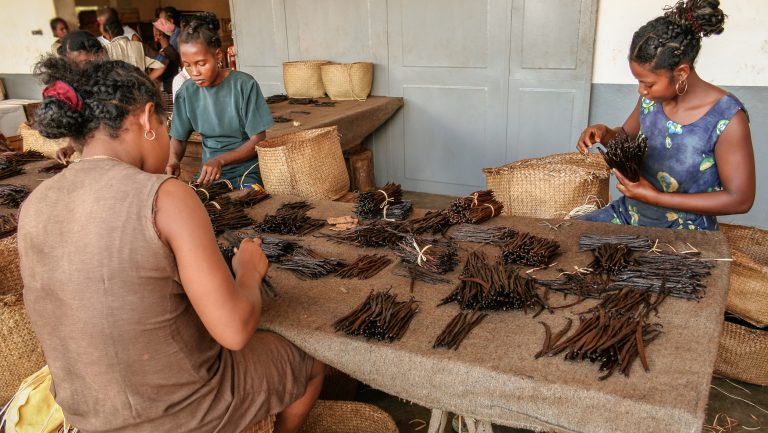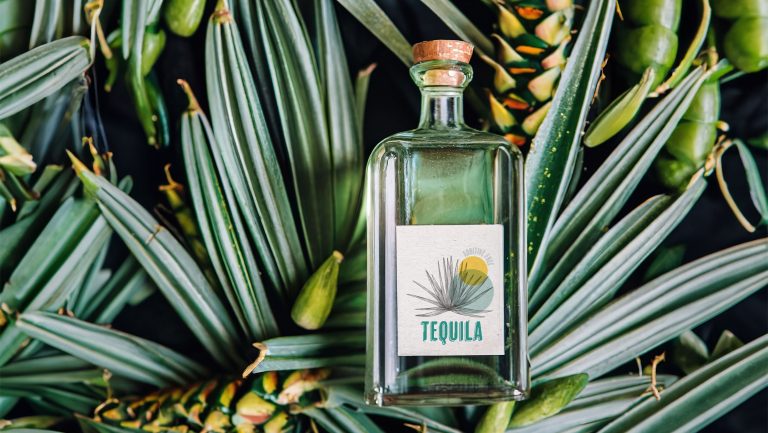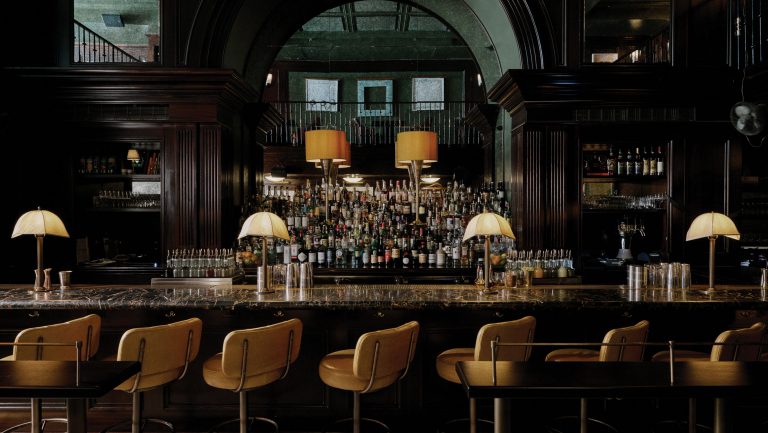An unprecedented global shortage of vanilla is prompting spirits producers to make changes, whether that entails pulling certain vanilla-rich products from the market, adjusting processing techniques, or simply steeling themselves to take a hit until prices return to normal—if they ever do.
Vanilla prices have been on the rise for years, initially because of increasing consumer demand for “natural” vanilla—which is derived from the pods of a particular orchid—instead of vanillin, a synthetic flavoring that resembles vanilla. Demand strongly outstripped supply, and prices rose accordingly.
Then, in March, a cyclone in Madagascar, which produces about 80 percent of the world’s vanilla, squeezed supply even further. According to news reports, one-third of the vanilla crop there was devastated. As a result, the price of vanilla beans is now 10 times what it was just five years ago. From a low of around $50 a kilogram in 2013, the price rose in 2015 and 2016 to $100 to $200 per kilogram as the demand for natural vanilla increased. The price skyrocketed after the cyclone, to around $500 per kilogram.

Don’t miss the latest drinks industry news and insights. Sign up for our award-winning newsletters and get insider intel, resources, and trends delivered to your inbox every week.
“At this point, a vanilla bean is worth its weight in silver,” notes Mark Freeman, the vice president of sales for Shank’s Extracts, a purveyor of vanilla extract and other flavorings. (With both commodities now priced around $500 per kilogram, this is literally true.)
Since it takes about three years from the time a an orchid vine is planted until the vanilla beans can be harvested, new supply will be hard to come by in the near future, Freeman explains. That could mean higher prices for a long time.
Pastry chefs have already been making considerable adjustments to compensate for rising vanilla prices. Spirits have a longer shelf life than baked goods, obviously, so producers have managed to hold out a bit longer, but now many—particularly smaller ones—are feeling the pinch.
Eating the Cost
Some producers are just bracing themselves to absorb the cost until the price normalizes. FEW Spirits, based in Chicago, uses about one pound of Madagascar vanilla as a botanical in each batch of its American Gin. “It’s a real and material difference,” says founder Paul Hletko, “but we’re not going to change what we do at all. We just hope that the price will stabilize and return to more traditional levels.” Until then, “we’re just eating the cost.”
Similarly, Black Button Distilling in Rochester, New York, uses Madagascar vanilla extract in its Apple Pie Moonshine product, a mix of spiced apple cider and corn whiskey, and has opted to swallow the price increase. “Luckily, it’s only a small expense,” says the president and head distiller, Jason Barrett. He estimates the cost at about 10 cents per bottle, or $200 per 2,000-bottle batch. But with four or five batches per year, that adds up to about $1,000 a year. “And,” Barrett says, “that’s $1,000 less we have to use elsewhere.”
Taking Vanilla Spirits off the Shelf
Others have opted to curtail production or even pull vanilla-rich bottlings from the shelves altogether. At Greenbar Distillery in Los Angeles, cofounder and spirits maker Melkon Khosrovian cites “skyrocketing prices and the inconsistent quality” of Tahitian and Madagascar vanilla in the distillery’s decision to discontinue Tru Vanilla Vodka earlier this year, and Bar Keep Vanilla Bitters two years ago. “[We] just couldn’t justify hiking prices and offering inferior spirits,” he laments. But Greenbar will continue to produce Crusoe Spiced Rum, which also uses vanilla, “but it’s not the majority of the ingredient bill,” Khosrovian says, “so [we’ll] buy selectively and use only the best we receive.”
At North Shore Distillery in Green Oaks, Illinois, cofounder and co-owner Sonja Kassebaum reports “product outages” of spirits that use vanilla, including Tahitian Vanilla Vodka and Doublewood Rum, which includes Mexican vanilla. “We have had to adjust our production schedule meaningfully,” Kassebaum says. The vanilla vodka is now sold only at North Shore’s tasting room. “We’re glad for that,” she says, “since the vanilla alone costs $4 to $5 a bottle for that product now.”
Flavoring with Less Vanilla
Some producers have made strategic changes to stretch vanilla as far as it can possibly go. For example, at Wigle, a distillery in Pittsburgh, vanilla is used in five products, including Landlocked Spiced, which alone uses four pounds of vanilla beans for each 400-bottle run. (The distillery varies the type of vanilla—Indonesian, Tahitian, or Madagascar—depending on what’s available.)
“We don’t want to pass the cost along to consumers,” says Michael Foglia, the director of new product development and innovation for Wigle and the cidery and restaurant Threadbare. So to optimize the vanilla, Wigle is processing it differently, cutting it horizontally, “like green beans,” Foglia says, instead of splitting the bean lengthwise, which exposes more of the interior of the bean directly to the spirit. But it takes longer to process the beans the horizontal way, Foglia points out. Wigle is also experimenting with macerating vanilla pieces in the spirit for longer periods, to create more intense flavor.
“It’s about using less vanilla to create the same flavor,” Foglia sums up. In addition, Wigle looks for opportunities to use the vanilla multiple times. “If we’re already paying for it,” Foglia says, “let’s use it twice.” Wigle’s Coffee Liqueur, for example, uses 1.7 pounds of vanilla for each 450-bottle run. After macerating the vanilla in the spiced coffee mixture, that coffee-infused vanilla is being removed and taken over to Threadbare’s kitchen for use in baked goods.
Wait-and-See Stance
Of course, some producers seem to be weathering the vanilla shortage just fine, particularly larger producers. For example, a representative for Jim Beam, which makes Jim Beam Vanilla, a whiskey flavored with Madagascar vanilla bean liqueur, confirms that production has been unaffected by the current vanilla shortage.
Others are taking a wait-and-see approach. A representative for Giffard, a distiller of liqueurs in Avrillé, France, that produces a Vanille de Madagascar liqueur, says that the vanilla shortage is “an ongoing discussion” but has declined to provide additional detail, adding, “There are a ton of variables to consider, and Giffard is currently analyzing the landscape to determine next steps.”
For now, spirits makers are holding steady and hoping that vanilla prices will eventually normalize. But most of them readily acknowledge that if prices for the flavoring continue to rise, authentic vanilla-flavored spirits may disappear from the shelves for a long time.

Dispatch
Sign up for our award-winning newsletter
Don’t miss the latest drinks industry news and insights—delivered to your inbox every week.
Kara Newman reviews spirits for Wine Enthusiast magazine and is the author of Shake. Stir. Sip., Nightcap, and Cocktails with a Twist (Chronicle Books).








